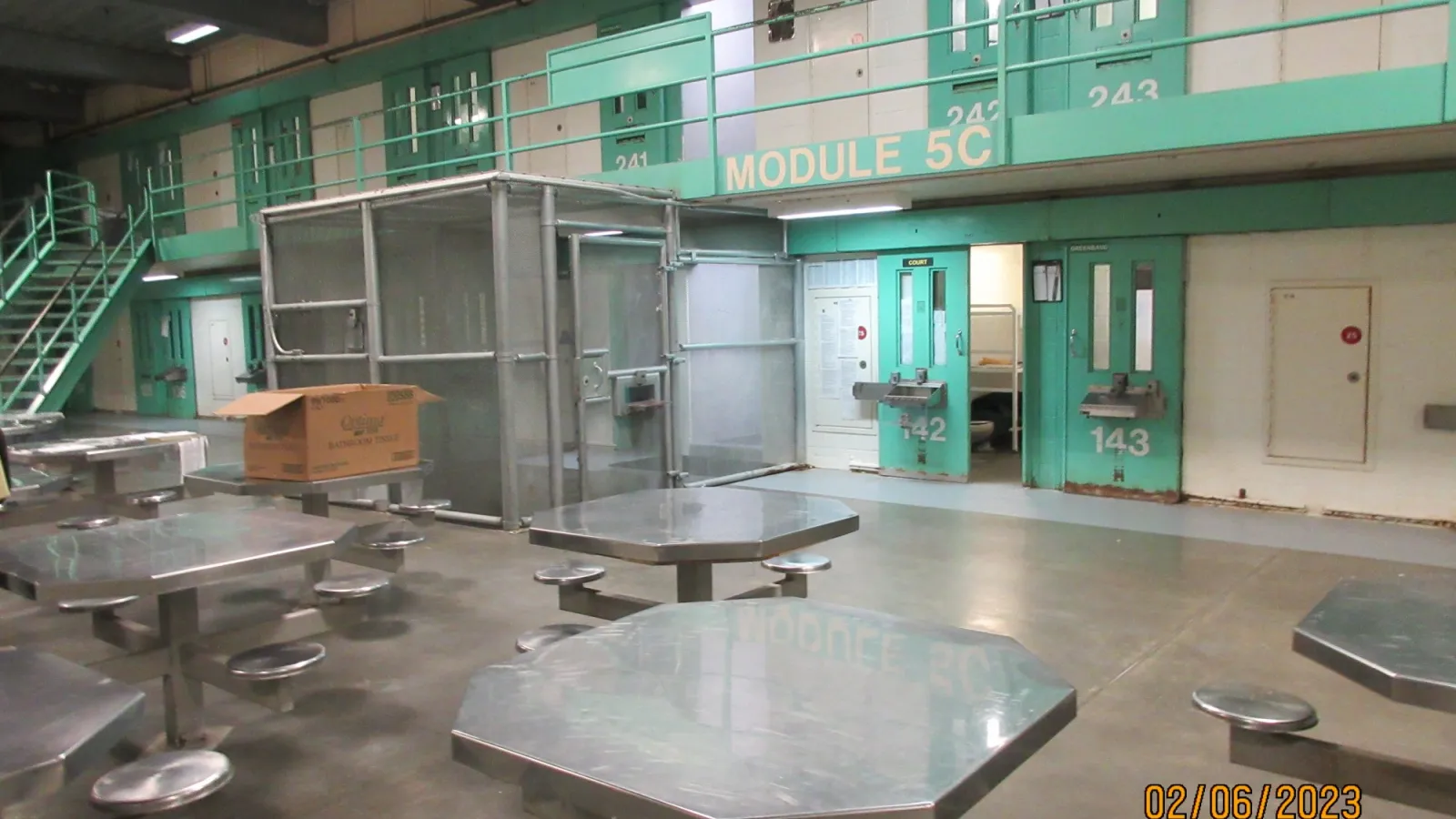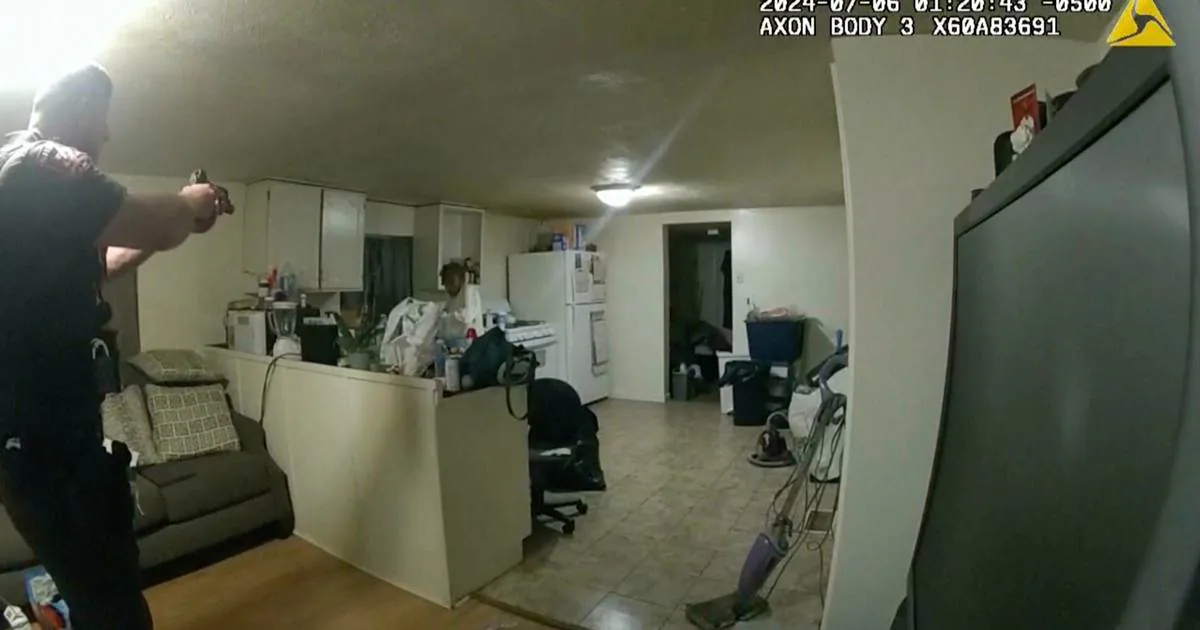Copyright sandiegouniontribune

Three months after two men died in jail isolation cells, lawyers in a class-action lawsuit against San Diego County and the Sheriff’s Office are asking a federal judge to limit how long people with serious mental illness can be held in solitary confinement. The request for a preliminary injunction was filed in federal court last Friday, accompanied by more than a dozen sworn declarations from people describing their experience in administrative separation cells in San Diego jails. The 11 men and three women describe getting little to no mental health treatment, and almost no human contact. They’re let out of their cells for less than an hour a day, if at all. They say their toilets regularly overflow, causing a foul stench and filthy conditions. Trash piles up; there’s no scheduled cleaning, and access to supplies is limited. “There are rats, birds, ants, flies and roaches inside the unit and feces all over the place in the module and the yard,” wrote Ismael Betancourt, who’s been held continuously in administrative separation — the sheriff’s term for solitary confinement — for more than four years at three different San Diego jails. The showers are “disgusting and full of mold,” he wrote. “Whenever I am out of my cell, I wear waist chains and my legs are shackled. Even when my wife and kids visit me in person, they chain me up on the wall right in front of my family.” Isolation cells, formally known as administrative separation, are not designed to be punitive. Yet detainees say they are denied basic privileges. Some say they’re never told why they are there or how long they will stay. Attorneys for plaintiffs in the class-action lawsuit Dunsmore v. San Diego County are asking a federal judge to order the Sheriff’s Office to stop keeping people in isolation unless they present “an immediate and serious danger” and there is “no reasonable alternative.” As of Friday, there were 251 people were in administrative separation in San Diego jails, a Sheriff’s Office spokesperson said via email. Slightly fewer than half have been flagged as having a serious mental illness. That designation “does not directly reflect their need for a higher level of care,” Lt. David Collins said. “For example, an incarcerated person can be identified as (seriously mentally ill) but also be medication compliant, not have behavioral issues.” The request for a preliminary injunction, which is expected to be contested at a hearing in November, was filed hours after lawyers for plaintiffs and defendants met for their most recent settlement conference. Settlement negotiations are scheduled to continue Oct. 28; if no deal is reached, a trial is scheduled to begin in January. The injunction petition describes a host of conditions that plaintiffs’ lawyers say create real harm for the men and women in sheriff’s custody. “People with mental illness housed in solitary confinement are vulnerable to deterioration and decompensation of their mental health condition,” the 32-page filing states. “Placing such individuals in isolation intensifies their symptoms and puts them at substantial risk of psychosis, self-harm and suicide.” The declarations that accompany the petition — 16 in all, including one from a correctional healthcare expert and one from the sister of a man who died in an isolation cell — support the filing’s arguments. Owerrie Bacon Jr. described spending a year in administrative separation after being arrested in 2023. He wrote that he was supposed to be let out of his cell for an hour a day but often got less than that. Bacon said he once was locked down for nearly a week. The brief reprieve from isolation is not trivial. The only time people in administrative separation can take a shower or make a phone call is when they are let out — and even then, they are alone in their unit’s dayroom. Last year, Bacon was found incompetent to stand trial and transferred to a state psychiatric hospital. There, he received regular treatment, and his mental health improved, he wrote in his declaration. Earlier this year, when he was returned to a San Diego jail, he began to decompensate. “Being in administrative separation is bad for my mental health,” Bacon wrote. “Being so isolated, I sometimes feel like the walls are closing in.” The Sheriff’s Office declined to comment on the request for a preliminary injunction or the sworn testimonials from people in custody State guidelines and sheriff’s policy require that people in administrative separation be provided 10 hours of out-of-cell time each week — seven hours of dayroom time and at least three hours of recreation in an area that “allows for the opportunity of physical exertion.” Nearly every person who provided a declaration wrote that they never received their three hours of recreation time, let alone seven hours of dayroom time. “At George Bailey, I receive only 50 minutes of out-of-cell time each day,” Betancourt wrote. “When I do get to go into the dayroom, I am placed in a cage and treated like an animal. The only way that I can socialize while in this cage is through screaming at other people because I am too far away from them. “When I was at Vista, I did not get to go out into the yard at all and was never asked if I wanted to do so,” he wrote. Collins said there are reasons dayroom and out-of-cell time might be canceled or cut short, such as critical incidents occurring in the jail, staffing shortages, maintenance issues or scheduled events, like a court hearing or medical clinic visit. Three years ago, after the medical examiner ruled that Lonnie Rupard died from neglect in a solitary confinement cell in the Central Jail, the Sheriff’s Office said it would start performing wellness checks involving weekly visits from a multidisciplinary team to “determine the collaborative, individualized care needed to treat patients.” A recent court filing from the county in the Dunsmore case described a “multidisciplinary team that makes weekly ‘wellness rounds’ in the administrative separation unit of the jail.” “These rounds occur 52 weeks a year,” the filing said. “This approach can lead to better overall outcomes and safety.” But nearly all 14 declarations described the wellness checks — conducted cell-side by healthcare providers, with a deputy standing nearby — as ineffective. “The mental health staff who came to see me once or twice a month did not provide confidential counseling,” Miguel Altamirano said in his declaration. “They would ask basic questions and our conversation would last around two minutes.” Altamirano, who spent several months in isolation at the Vista jail, wrote that people in his unit regularly scream and cry for help but get no help. This assertion was echoed in other declarations. “There are people who yell at demons, yell at the air, say that they’re hearing voices,” wrote Yolanda Maroni, who had been in an isolation cell at the Las Colinas women’s jail in Santee for a month when Dunsmore lawyers took her sworn declaration. Larry Millete has been in administrative separation in both the Vista jail and the George Bailey Detention Facility in Otay Mesa. During one stretch, he spent more than six months in a unit known as “the hole,” in a cell with only a small window in the door. “In order to mitigate my symptoms of claustrophobia, I would sit directly next to the door and try and look out that window,” he wrote in his declaration. Unlike others who submitted declarations, Millete said he had been offered confidential mental health visits where he “was comfortable fully expressing my mental health needs.” But during wellness rounds, he wrote, “I was not comfortable fully expressing myself because custody staff was present with a body camera recording the interaction.” Collins said that “staff make every attempt to identify confidential space” for people who request a confidential visit, or if a person seems in need of an evaluation in such a setting. “The San Diego County Sheriff’s Office has identified the need for additional confidential space and is currently exploring solutions to include portable confidential booths to accommodate the growth in the services we provide,” he said. Additional testimony raises another issue: According to a declaration provided by Keith Skerke, the Sheriff’s Office has blocked the telephone number of Rosen Bien Galvan & Grunfeld, the San Francisco law firm acting as lead counsel for the Dunsmore plaintiffs. “When I try to call the phone number, I hear a message that says ‘This number has been restricted’ and then the call ends,” wrote Skerke, who is currently locked up in the Vista Detention Facility. “I understand from speaking with other incarcerated persons that they have not been able to call that phone number either,” he said. The sheriff’s office declined to answer a question about the issue. ‘I was horrified’ The Dunsmore plaintiffs’ petition notes that since 2021, at least seven people with mental illness have died in administrative separation by suicide or due to inadequate medical care in jail. This includes two particularly gruesome deaths in July. Early in the morning of July 13, Corey Dean died in his isolation cell at the Vista jail. In a statement, sheriff’s officials said deputies called 911 immediately after finding him unresponsive, and that despite lifesaving measures, he did not survive. Days later, The San Diego Union-Tribune reported based on a series of sworn declarations, gathered by a Rosen Bien Galvan & Grunfeld attorney, that the 43-year-old had pleaded for help for days but was largely ignored. After Dean was found dead, deputies dragged his feces-covered body and the mattress he died on into the common area, where it remained in plain view for hours, according to witnesses. “They served us breakfast while Mr. Dean was lying dead in the middle of the dayroom,” said Jesse Gonzales, who was locked in a nearby isolation cell in the days before Dean died. “They did not remove his body until shortly before serving us lunch.” In a sworn declaration of her own, Dean’s sister Melissa testified that sheriff’s officials told her that her brother, who had been diagnosed with schizophrenia in his 20s, died a “natural death.” “I was horrified to read this article and prayed that my parents would not see it,” she wrote. “If Corey had only been removed from the solitary unit where he was and placed in a safer and more caring environment, he might still be with us.” Two weeks after Dean’s death, Karim Talib died a similar death in the San Diego Central Jail. Witnesses said deputies were repeatedly warned that Talib urgently needed medical attention. In his final days, they said, he had stopped taking his medication, had stopped eating and was left covered in his own waste. “The day after Mr. Talib entered Unit 7/E, the entire unit began to smell like feces,” detainee Maurice Vasquez wrote. “Other incarcerated persons in the unit were yelling that they were concerned that the new person who had entered the unit was unwell.” Sheriff’s officials declined at the time to discuss either of the deaths or the sworn testimony provided by witnesses. But in a statement, a department spokesperson said the sheriff faces major challenges treating people with serious medical and mental health needs. “Our jails have become the region’s largest mental health provider by default — not by design,” Lt. David Collins wrote in an August email. “This is a public-health failure, not a criminal justice solution.” No sunlight, fresh air Administrative separation is not supposed to be punishment. Rather, the housing status is reserved for people who are believed to present a danger to themselves or others or who are unable “to adjust and conform to the minimum standards expected of those in mainline housing or designated special housing,” sheriff’s policy says. “Administrative separation shall consist of separate and secure housing, but shall not involve any other deprivation of privileges, other than is necessary to obtain the objective of protecting the incarcerated person, staff or public,” the policy says. But according to declaration after declaration, people housed in isolation are regularly denied privileges and basic services. William Sterling had been in administrative separation for nearly 18 months when attorneys took his declaration Sept. 4. He said he had to shower with shackles on his wrists and ankles. “I do not receive any programming in Unit 6/C,” he wrote. Aside from 50 minutes out of his cell every other day, Sterling wrote, “I am kept locked up alone … without access to a shower or a telephone or the ability to meaningfully communicate with other incarcerated people.” Some people housed in administrative separation say they are not told why they are there, or when they might be returned to the general population. Julio Serrano spent seven months in a Vista isolation cell and often was not let out for even one hour a day. Hearing the constant screaming and other people people talking to themselves exacerbated his mental distress, he said. “When I asked deputies why I am housed in administrative separation, they refused to give me paperwork,” he wrote in a declaration signed last month. “I currently do not have phone access in my housing unit. I also do not receive any programming.” At the Central Jail, Christopher Hawkins said even when he is let out of his cell, it’s often late at night when he can’t call his attorney or family. “There is nowhere to exercise and I have never had access to sunlight or fresh air,” he wrote. “Until I was recently sentenced to prison, I had no expectation of being released from administrative separation.” Parties at odds The Dunsmore lawsuit dates back to 2020, when Darryl Dunsmore sued the county saying the San Diego Sheriff’s Office was failing to provide proper food, healthcare and other services. His complaint was expanded into a class-action case in 2023. The plaintiffs now include anyone who is, has been or will be detained in San Diego County jail. Late last year, Martinez agreed in a partial settlement to upgrade jail facilities to comply with the Americans with Disabilities Act. She also pledged to provide support to people with developmental disabilities, and to provide assistive equipment — like wheelchairs, walkers or CPAP machines — to those who need it. But the parties have remained at odds over how to improve the standard of care provided to people in San Diego jails, especially those with mental illness. An expert in correctional mental health care who toured San Diego County jails testified last year that they were the worst he had seen over decades of professional oversight. “I have never seen such poor psychiatric care provided to people in restrictive housing units in any other correctional system,” Dr. Pablo Stewart wrote in a sworn declaration after visiting multiple facilities and interviewing incarcerated people. “Conditions in the San Diego County jails’ administrative separation units are among the harshest and most restrictive forms for solitary confinement I have seen in over 35 years of practice,” he said. In asking for an injunction limiting the use of solitary confinement, the Dunsmore lawyers said the county is aware of the ongoing risks its current practices pose to the people in its custody. They also argue the evidence submitted to date shows that the plaintiffs are likely to prevail at trial. “Federal courts regularly continue to acknowledge the profoundly harmful effects of subjecting individuals to solitary confinement — whether or not the individuals have mental illness,” they wrote. Absent any settlement agreement following the Oct. 28 conference, formal replies to the injunction request are due by Nov. 4. The hearing on the request will be held Nov. 20.



